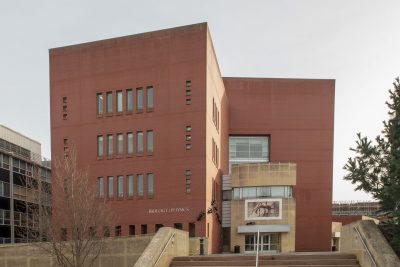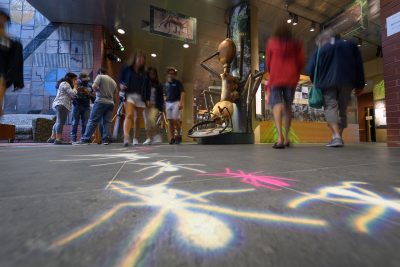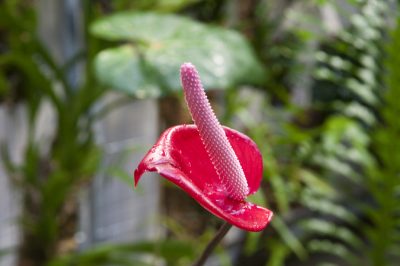Who is the EEB Department?
Professor Pamela Diggle, Department Head

The Department of Ecology and Evolutionary Biology is one of three departments in the Biological Sciences at the University of Connecticut . We currently have 35 faculty members, plus 7 emeritus faculty members. About 56 graduate students are currently studying for M.S. or Ph.D. degrees. Research in the department covers a wide range of fields, including behavioral ecology of vertebrates and invertebrates, systematics and evolution of plants and animals, population and community ecology, functional morphology and development, and conservation biology. Faculty members and graduate students work on nearly all of the major groups of organisms, including algae, mosses and lichens, aquatic plants, desert plants, tropical and temperate forest trees, the parasites of sharks and rays, insects, spiders, fishes, amphibians, reptiles, birds, and mammals. Current research projects span the globe, with investigators working throughout North America, Costa Rica, Panama, Nicaragua, Brazil, Borneo, Madagascar, South Africa, Australia, New Zealand, Japan, and many other countries.

What does the EEB department do?
Our strong research program has given national recognition to Ecology and Evolutionary Biology at the University of Connecticut . Federal grant support for research in systematic biology over the past decade places the University of Connecticut among the top 10 in the country. Many of our faculty members serve or have served as officers of major scientific societies, including several presidents of national or international scientific societies, as National Science Foundation panel directors or members, and as editors of over two dozen science journals. Recent graduate students have won prizes for best papers at national meetings in fields such as botany, ecology, entomology, evolution, herpetology, ichthyology, marine biology, parasitology, and plant systematics.
The Department of Ecology and Evolutionary Biology is currently housed in several buildings on the Storrs campus. About half of the department has laboratory facilities in the

Pharmacy/Biology Building. This building includes a departmental DNA sequencing facility used by many of our systematic biologists. The other half of the department is housed in the Torrey Life Sciences Building. Internationally important systematic reference collections with over 2,000,000 specimens of plants, invertebrates, and vertebrates, are maintained by the department in a new Collections Facility in the adjacent Biology/Physics Building, which provides both storage areas and space and computer facilities to facilitate work with the collections. This facility also includes an extensive library of reference works on plants, invertebrates, and vertebrates, including the Storrs Olson Library of Bryology, one of the largest collections of books on mosses and lichens in the country. In addition, the EEB Greenhouses contains one of the largest and most diverse collections of living plants in the Northeast. New research greenhouses are located on the roof of the Biology/Physics Building and provide space for controlled experiments with plants. The EEB Department maintains close ties with the Departments of Physiology and Neurobiology, Molecular and Cell Biology, Marine Sciences, and Natural Resources and the Environment, as well as the Center for Environmental Sciences and Engineering, which together comprise one of the largest groups of biologists in the Northeast. The University is a permanent member of the Organization for Tropical Studies , which provides graduate students with training and research experience in tropical biology.
The University is located in rural northeastern Connecticut , a half-hour drive from Hartford , one and a half hours from Boston and two and a half hours from New York City . The campus is situated in an attractive landscape of forested hills interspersed with pastoral farms and small colonial New England villages. The University lands encompass some 3,000 acres offering ready access to a diversity of habitats well-suited for field studies.

